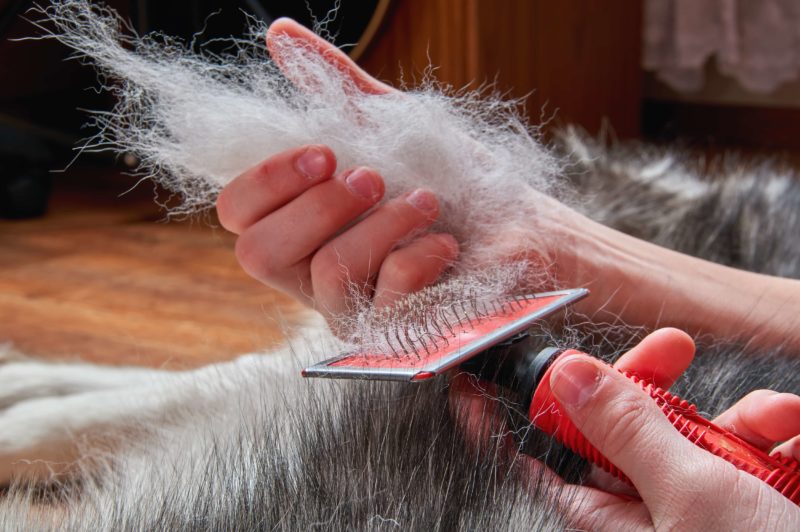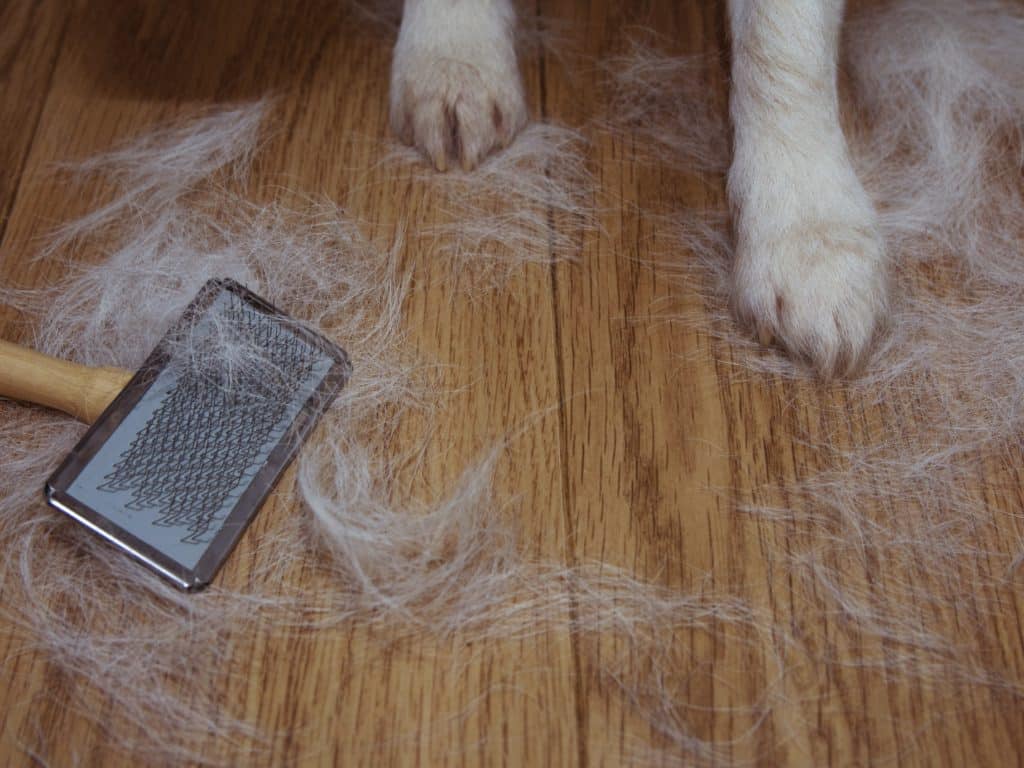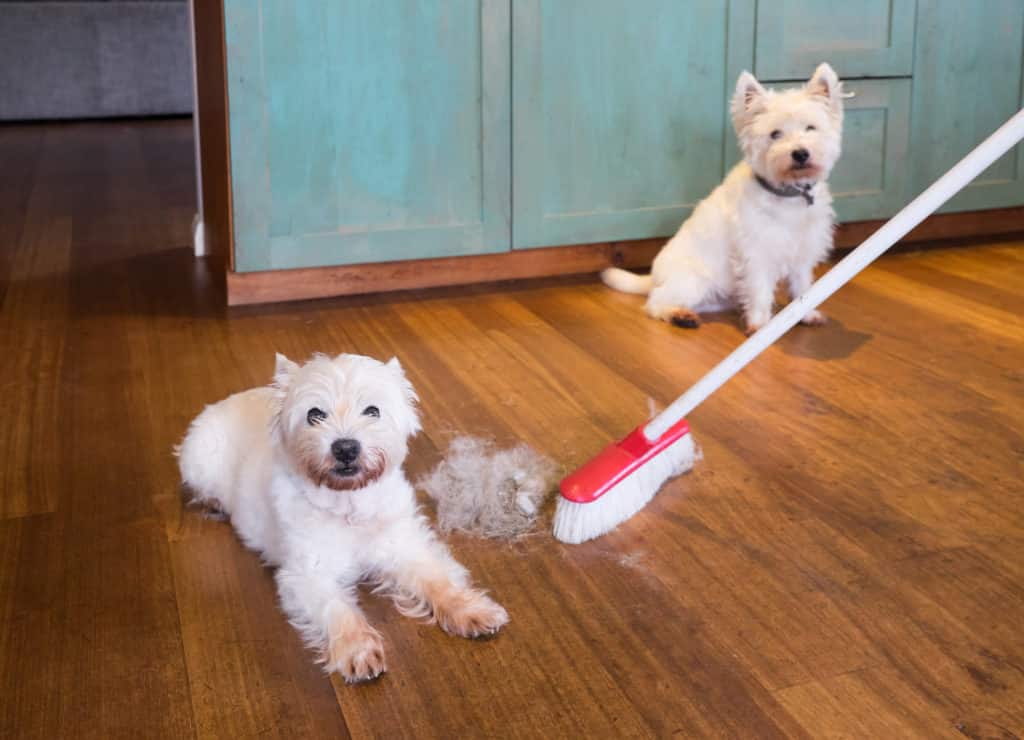Future pet owners often ask me what types of dogs are “hypoallergenic”, especially if there are humans in the house with allergies to pet dander. While there are no truly hypoallergenic dogs, there are several breeds that tend to shed minimally, thus depositing fewer hairs and the offending dead skin cells that trigger allergies in the environment.
Dogs with double coats such as Huskies shed the most, but all shedding is based on the natural growth cycles of the hair in follicles, which can vary based on breed, age, health, hormones, and environment. These factors all determine whether your dog has long or short hair, coarse and wiry hair or curly fur, and whether they shed prolifically year-round or minimally during certain seasons.
A Dog’s Hair Growth Cycle
To fully understand the hair growth and shedding process, the type of coat your dog possesses, and finding the pup that best suits your family’s needs, it’s a good idea to review the hair growth cycle and its four stages.
- Anagen Stage – During the Anagen stage, hairs are actively growing. Long-haired breeds such as Afghan Hounds have hair that spend more time in the growth phase.
- Catagen Stage – During Catagen, new hairs reach the end of their growth phase and cease growth.
- Telagen Stage – Telagen is the stage where hairs are dormant but are still attached in the hair follicle. Terrier breeds, like the West Highland White and some toy breeds such as the Maltese and Shih Tzu, have fur that tends to rest in the Telagen phase of the hair cycle for longer periods of time.
- Exogen Stage – Exogen is the period where hair reaches the end of its lifespan and is shed. Year-round shedders have some hairs that alternate between Exogen, Telagen, Catagen, and Anagen stages. Their hair may always appear to be uniform in appearance. Dogs with a single coat, such as Yorkies, may shed less and do so year-round vs dogs with a double layer coat; double-layer coats consist of a layer of guard hairs covering a thicker, soft undercoat. This protective, insulating, undercoat is shed as the weather warms up seasonally and is replaced by a thinner undercoat. This spring shedding is known as “blowing the coat” and is the bane of many pet owners’ existences!
What Can Affect a Dog’s Shedding?
With a house full of Golden Retriever hair, I am all too familiar with the massive period of shedding in the spring. Some factors that can affect a dog’s shedding process include…
Indoor Temperature Shifts: When firing up the furnace in the winter or A/C in the summer, those gusts of wind heating or cooling your home can cause dog hair to blow around the house.
Hormone Changes: Hormone changes can occur with pregnancy or thyroid disease can also lead to a massive and sudden loss of the undercoat.
Nutrition: Maintaining optimal nutrition levels and reducing stress can play a part in a dog’s hair growth and shedding cycle. Hair growth, while essential for maintaining protection of the skin and regulating body temperature, is not essential for life. Resources such as vitamins, minerals, and nutrients, like fatty acids, will first be used for life-sustaining activities such as respiration and neuron function. By providing the correct balance of protein, fat, and carbohydrates based on your pet’s breed, age, size, health status and activity levels, nutrients needed for hair growth and retention can reach the follicles. Hair coat will cycle normally through the four stages of growth and loss, and the fur will look shiny and healthy.
How to Maintain My Dog’s Shedding Hair
For the Dog
To facilitate a faster blow-out and clean-up of the tumbleweed disaster, purchase some good grooming supplies and plan on daily brushing and monthly bathing.
- Nature’s Specialties EZ Out Deshedding Shampoo will help loosen the dead hair when massaged into the coat using warm water.
- The powerful Metrovac Pet Vacuum cuts drying time by 75% and is perfect for dogs with thick double-coats.
- Once the coat is dry, a FURminator de-shedding tool is great for brushing out the undercoat.
- Daily brushing with a slicker brush or soft bristled brush will keep your pooch in top shape.
For the Home
- Maintaining humidity will lessen the fur that sticks to surfaces and static cling.
- A rubber broom or squeegee will loosen hair from carpets and furniture; the Dyson pet vacuum or Shark have both helped keep the hair to a manageable level in our three-dog home.
- Throw blankets cover our most often used furniture pieces and can be laundered when needed. We also keep our glove compartments and kitchen junk drawer loaded with sticky rollers. In a pinch, dryer sheets are fabulous at grabbing dog hair from clothing, upholstery, and floors. And they smell great too!
Keep these tips in mind to help maintain your furry friends’ hair growth cycle and shedding process this season.


